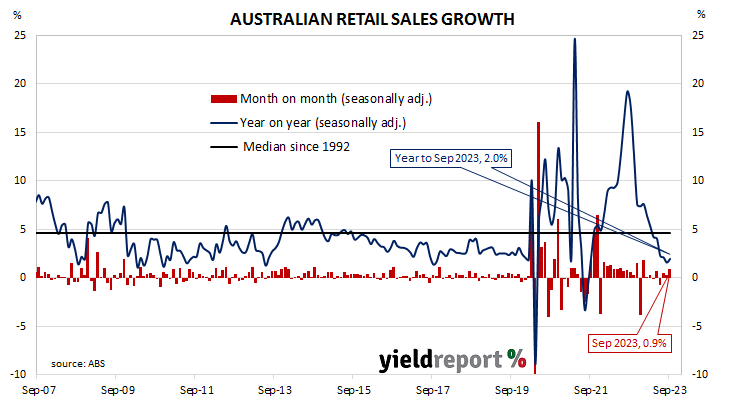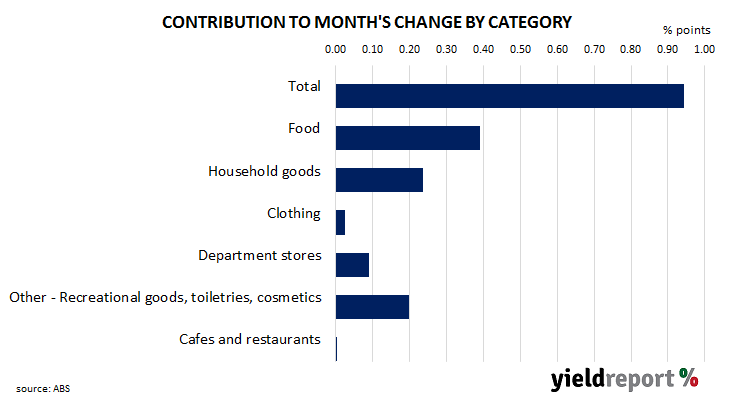Summary: Retail sales up 0.9% in September, considerably greater than expected; up 2.0% on 12-month basis; Westpac: represents sizeable decline accounting for impact of inflation, population growth; ACGB yields rise; rate-rise expectations firm; ANZ: underlying weakness in retail sector right now; largest influence on result from food sales.
Growth figures of domestic retail sales spent most of the 2010s at levels below the post-1992 average. While economic conditions had been generally favourable, wage growth and inflation rates were low. Expenditures on goods then jumped in the early stages of 2020 as government restrictions severely altered households’ spending habits. Households mostly reverted to their usual patterns as restrictions eased in the latter part of 2020 and throughout 2021.
According to the latest ABS figures, total retail sales increased by 0.9% on a seasonally adjusted basis in September. The rise was considerably greater than the 0.3% increase which had been generally expected as well as August’s 0.3% gain. Sales increased by 2.0% on an annual basis, up from August’s revised figure of 1.6%.
“Annual growth in nominal sales growth lifted slightly, from 1.6% to 2.0% in September,” said Westpac economist Ryan Wells. “However, this still represents a sizeable decline once the impact of inflation and population growth are accounted for.”
Long-term Commonwealth Government bond yields moved higher on the day. By the close of business, the 3-year ACGB yield had added 5bps to 4.39%, the 10-year yield had gained 6bps to 4.89% while the 20-year yield finished 7bps higher at 5.23%.
In the cash futures market, expectations regarding further rate rises firmed. At the end of the day, contracts implied the cash rate would increase from the current rate of 4.07% to average 4.20% through November, 4.285% in December and 4.37% in February. May 2024 contracts implied a 4.495% average cash rate as did August 2024 contracts, 43bps more than the current rate.
“The bumper September result takes the level of nominal retail sales just above where the series printed back in November 2022,” said ANZ economist Madeline Dunk. “The fact that it has taken ten months to get back to this level highlights the underlying weakness in the retail sector right now, particularly given the rapid pace of population growth.
Retail sales are typically segmented into six categories (see below), with the “Food” segment accounting for 40% of total sales. The largest influences on the month’s total came from this segment where sales rose by 1.0% over the month.



